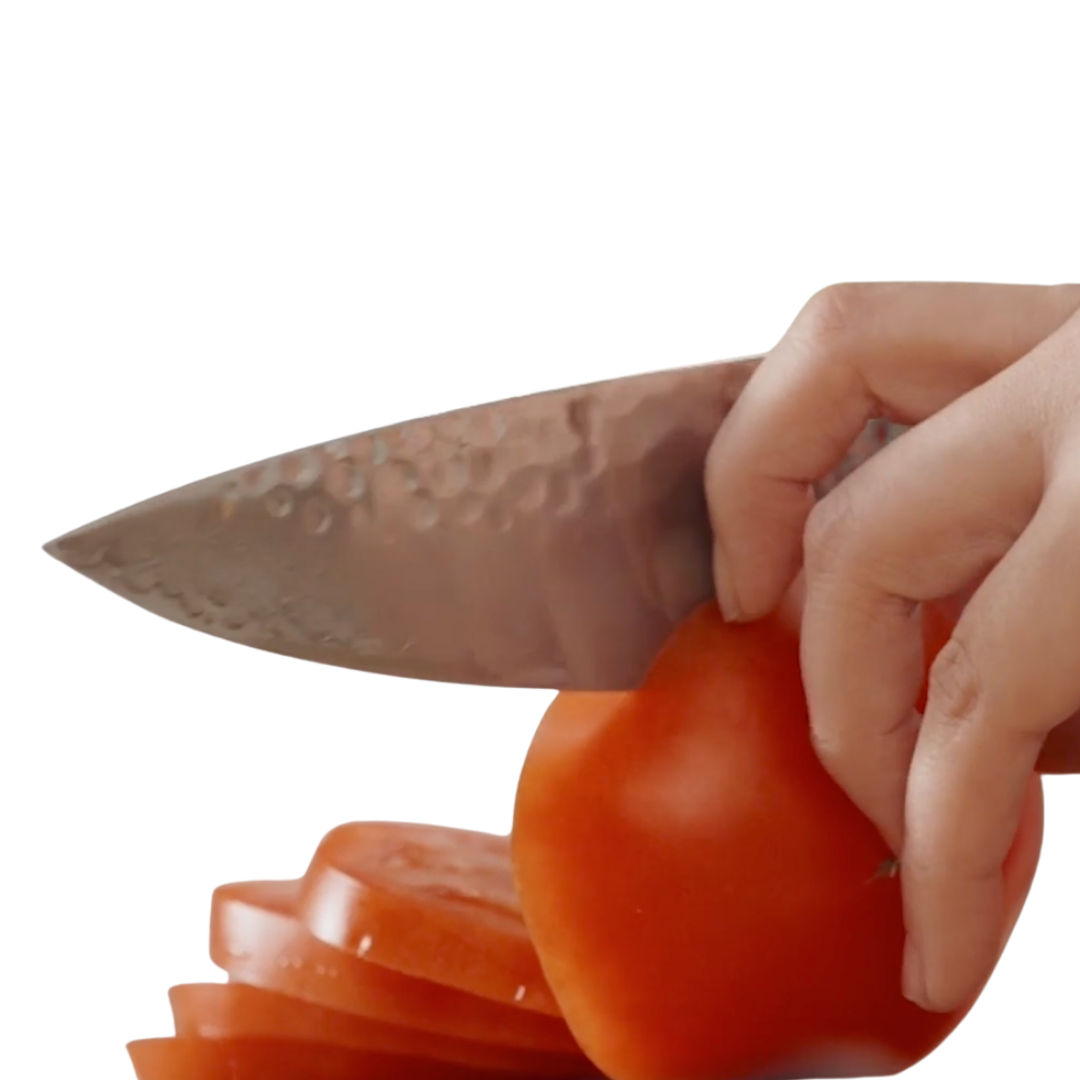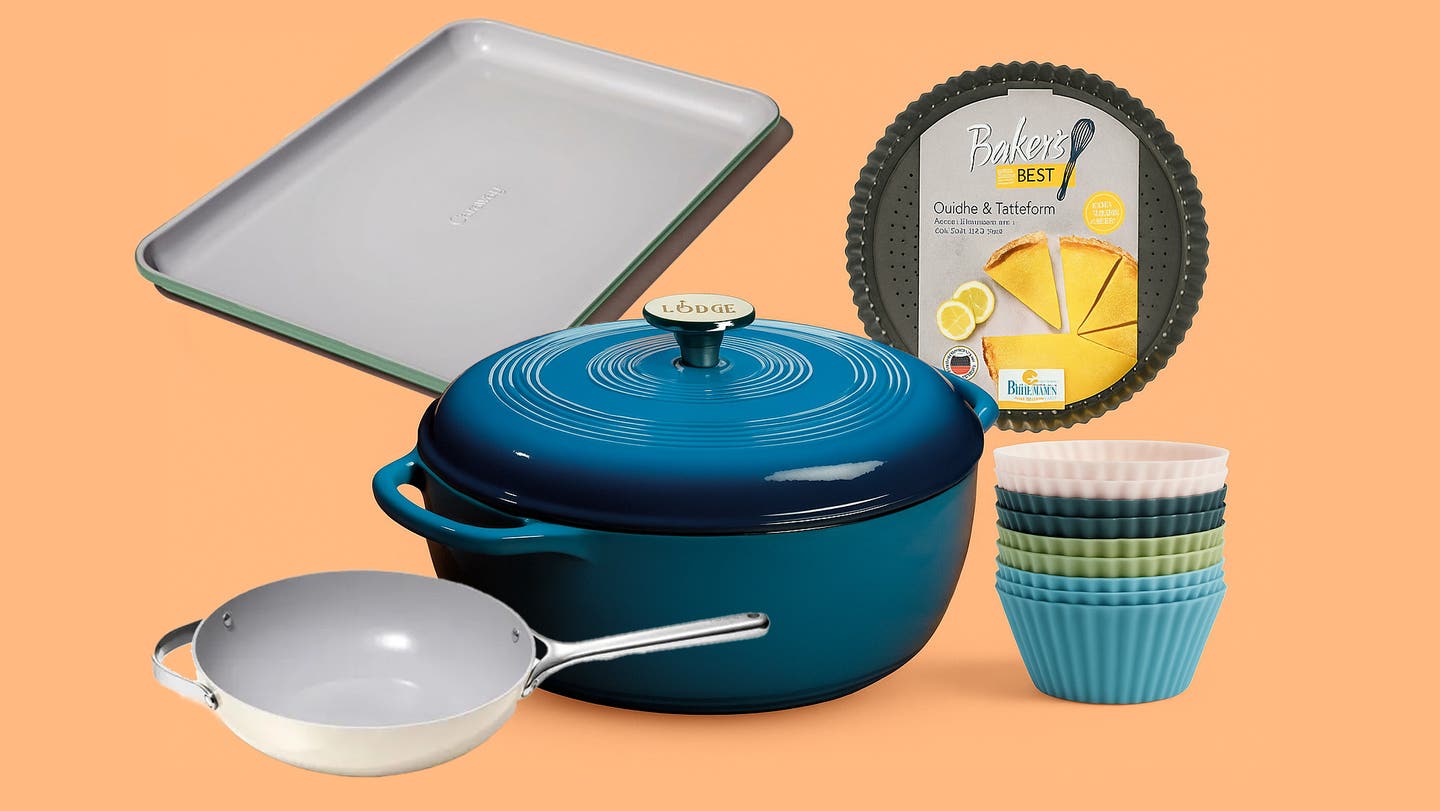By Megan Edwards,
Last Updated:From conserving water to reducing carbon emissions, the benefits of a whole-food, plant-based diet extend beyond your own body to support the health of the planet. Recent research has even shown that a vegan diet is significantly better for the environment than the popular Mediterranean diet. But cutting out animal products doesn’t automatically make your meals eco-friendly: Research has found that, compared with less-healthy eaters, healthy eaters tend to generate more food waste, which is a major culprit behind rising rates of greenhouse gasses. By learning how to reduce food waste at home, you can send less organic matter to landfills and keep more money in your pocket by consciously using every last edible scrap to create something delicious.
Going green can be a bit daunting, so we talked to several plant-based experts about their favorite strategies for reducing food waste at home. Discover how to meal plan more efficiently, transform commonly wasted food into yummy recipes, and organize your pantry to be eco-friendly. Reducing food waste is easier (and tastier) than you might think!
How Much Food Is Wasted in the United States?
According to Feeding America, 119 billion pounds of food are wasted in the United States every year. That equates to 130 billion meals and nearly 40% of all food in the country. Organic waste is also the single largest category of material that goes into municipal landfills, which generate 15% of all U.S. methane emissions (a hazardous air pollutant and greenhouse gas).
While plant-based diets are significantly better for the environment than diets rich in animal products, a 2018 study published in PLOS ONE discovered the biggest creators of food waste are households that consume a healthy, plant-forward diet. The study authors found that fruits and vegetables are more often thrown out than animal products or shelf-stable foods (such as grains or legumes), which means vegans can often be the worst offenders of sending organic matter to landfills.
The good news? Reducing your food waste at home can significantly cut down on the amount of trash you toss each week, which ultimately helps decrease methane emissions. Being cognizant of the waste your produce in the kitchen—especially as a plant-based eater—is a great way to make your daily habits a little greener.
20 Food Waste Solutions
When it comes to reducing food waste, small changes add up to make a big difference. Pick a few tips from the list below to incorporate into your weekly routine and see how much more food goes into your stomach instead of the garbage can.
1. Keep Track of What’s in Your Fridge
“I have a magnetic dry-erase board on my refrigerator where I keep a list of things that need to be eaten first,” says Toni Okamoto, founder of the Plant Based on a Budget website and author of Plant-Based on a Budget. “It helps me know what I have in the fridge and use up the older items sooner than what I’ve just bought. Leftovers also go on the list so that they don’t get pushed to the back and forgotten.” If lists stress you out, you can also designate an “Eat This First” shelf in your fridge and pantry where you store ingredients or leftovers that need to be consumed before you move on to new items.
2. Focus on Familiar Favorites, and Plan Ahead
Seizan Dreux Ellis, executive chef of the vegan restaurant chain Cafe Gratitude, says his biggest meal prep tip is to start with your favorite meals and plan new recipes around those. “Keep it simple. I think people, particularly when they're coming to a vegan diet or meal planning at home, get too complicated with it,” says Ellis. “I would just say to choose five simple dishes that you really enjoy and focus on those. If you love pasta, you know that will be one of your meals, and you can make two different kinds of sauces to go with it. If you love rice, then you can use it a couple times over the week and add a vegetable saute one night and a bean component the next night.” Planning out all your meals for the week ahead, as opposed to deciding the day-of what you’re having for dinner, helps keep ingredient waste to a minimum by ensuring you have everything you need. Check out our Cook Twice, Eat 6 Times meal prep guide for a week’s worth of tasty recipes.
3. Add Leftovers to “Catchall” Recipes
Snap up those straggler ingredients or small portion leftovers by incorporating them into forgiving dishes. “Curries and chilis are all easy, inexpensive dishes that can be adapted to whatever you have on hand,” says Okamoto. “You can throw so many things into them, then the slow cooking allows all the flavors to meld. I’ve come up with some interesting dishes by just making curries and chilis with what I have. … One time, I even threw a banana into a chili with sweet potatoes, quinoa, and cinnamon. I also do a lot of stir-fries and bowls. Bowls are especially easy to build with what you have, because you just start with a grain, add beans or tofu, use whatever vegetables you have, then pull it all together with some type of sauce.” For more inspiration, take a look at our article on creative ways to transform leftovers into a delicious new dish.
4. Welcome Worms Into Your Home
It’s inevitable that you’ll have food scraps that can’t be upcycled. Instead of tossing them in the garbage, turn them into nutrient-dense fertilizer with the help of a worm compost bin. The wriggly pink critters feast on your leftovers and naturally turn the waste into rich compost that can be returned to the soil, all without emitting any CO2. While electric countertop composters have become popular in recent years, experts note they don’t produce high-quality fertilizer, and the dirt-like substance they do make can emit greenhouse gasses when wet. Worm bins can be set up outside or inside, and the Essential Living Composter is an affordable, stylish option for indoor setups. While it may take a little work to get started, this is a truly eco-friendly compost technique that can also turn into a fun hobby. For those who aren’t so keen on inviting worms into their home, you can start a traditional compost bin outside or drop off your food scraps at your city’s public collection site. Check your city’s website for more information.
5. Make Broth with Vegetable Scraps
As a plant-based eater, you’re bound to end up with piles of carrot tops, potato peels, and onion skins that typically get thrown in the trash. Okamoto recommends saving these odd bits of produce to make a flavorful broth. “I like to cut up any produce that might have gotten left in the fridge, put it in a freezer box, and then use it to make a rich homemade vegetable broth when the box is full,” she says. “Vegetable broth only takes minutes to prepare in a pressure cooker or Instant Pot, and you can use it all week long in other recipes.” If you’re new to making your own broth from scratch, follow our step-by-step guide on how to make homemade veggie broth.
6. Give Old Bread New Life
“When bread goes hard it’s perfectly consumable, but it’s not going to be nice to eat as toast,” says Carleigh Bodrug, founder of the PlantYou website and bestselling author of Plant You: 140+ Ridiculously Easy, Amazingly Delicious Plant-Based Oil-Free Recipes. “So one thing I love to do with it is add it to a casserole dish with almond milk, cinnamon, and a little maple syrup to make a great baked French toast.” If you don’t have the ingredients on hand to turn old bread into a full meal, you can cut it into cubes and toast it into the oven for croutons or crumble it into breadcrumbs to use as a crispy coating.
7. Freeze Big-Flavor Ingredients
Recipes that call for tomato paste or chipotle chiles in adobo sauce often don’t use the whole can. Instead of discarding the extras, freeze them in 1-tablespoon dollops on a parchment-lined baking sheet overnight; then transfer them to a labeled freezer bag or container for future use. Next time a recipe calls for a small portion of that ingredient you’ll already have the perfect amount measured out! You can also freeze fresh herbs, onions, and citrus for later use. This is a great trick to make seasonal ingredients last longer so you can cook with them year-round. Most frozen items keep well for three to six months when stored in an airtight container.
8. Understand What 'Best-By' and ‘Use-By’ Dates Really Mean
USDA guidelines state that Use-By/Sell-By dates refer to the timespan when a product is at its best flavor or quality, not when it becomes unsafe to consume. Many people throw out perfectly good food that’s gone past the “use-by” date even though it’s not spoiled or stale. When it comes to whole-food, plant-based items, it’s relatively easy to tell whether or not something is still good: “As long as it doesn't have mold and doesn't smell, it’s fine,” says Bodrug. “You could have an apple that's a little bit bruised or a bell pepper that’s gone a bit wrinkly. It’s still perfectly safe to consume and can just be repurposed in a way that masks the imperfections.”
9. Stay Stocked on Pantry Staples
Okamoto suggests stocking your kitchen with plant-based basics so you can always find an easy way to eat straggler ingredients that might otherwise get thrown out. “I always have pantry staples like canned beans and tomatoes that can be used in lots of different ways to quickly make a meal,” she says. “Condiments are also a big help when throwing together meals. I keep soy sauce, hot sauce, and a salad dressing on hand at all times so I can use them to flavor whatever I’m making.” Take a look at our guide on how to give your kitchen a WFPB makeover so you can always have the essentials on hand.
10. Get a Food-Rescue Subscription Box
You can help reduce food waste outside of your own kitchen by subscribing to a food delivery service that rescues “ugly” produce. Companies such as Hungry Harvest team up with farmers to collect fruits and veggies that aren’t pretty enough to make it to store shelves but are just as tasty and safe to eat. Your carrots might not be perfectly straight nor your apple perfectly round, but using veggies that would normally be thrown away is a huge help in keeping organic waste out of landfills.
11. Hone Your Improv Skills
Making substitutions in recipes based on what you have on hand—and your own personal taste—will teach you how to get creative in the kitchen while reducing your food waste. “One thing I learned while cooking on a budget and one thing I really want for my readers is to feel comfortable making recipes based on what they have in their pantry,” Okamoto says. “For example, when a recipe calls for kale, you should feel empowered to use whatever greens you have instead of making a special trip to the store for kale. Most greens are interchangeable in recipes. Any color of bell pepper is fine [when bell pepper is called for]. Any member of the onion family—onions, leeks, shallots, etc.—will work for another. And so on.” If you’re not sure how to level up your cooking skills, FOK offers plant-based cooking classes that will turn you into a top chef in no time.
12. Regrow Your Scallions
Here’s a kitchen hack you’ll love: The next time you buy scallions (green onions) make sure to save the white bottom ends. Simply stick them in a glass of water and watch them grow back to their original size within a week! This sneaky tip ensures you always have fresh scallions on hand but only have to buy them once. Check out Bodrug’s video on this eco-friendly trick:
13. Don’t Shop Without a Plan or While Hungry
“Don't be at the mercy of trying to decide what to get when you go to the grocery store,” recommends Ellis. “Because you'll just end up over-purchasing, which leads to more potential food waste. So plan, even in a really general way, what you're going to eat that week to make sure you're purchasing intelligently.” Apart from arriving at the store prepared, shopping on an empty stomach is never a good idea. Those pesky hunger pangs might convince you to impulse-buy unhealthy snacks or ingredients you don’t really need. To help reduce food waste before you even start cooking, make sure you’ve fueled up on a good meal before pursuing the supermarket aisles.
14. Revive Wilting Veggies with Cold Water
Got droopy salad fixings such as greens, carrots, or celery? Give them a quick soak in ice water, pat them dry, and they’ll perk right up. For more produce resuscitation tips, check out Bodrug’s video on how to save wilting lettuce:
15. Learn to Preserve Your Food
Making your own pickles is easier than you might think! Preserving old produce by transforming it into tangy garnishes is a win-win, since you reduce food waste while creating a tasty topping for your meals. Red onions, carrots, and radishes are perfect for pickling, while old berries can easily be turned into jam. You can also dehydrate fruit for snacking or adding to salads, or ferment it to create a sourdough bread starter. If you’re not sure where to begin, Bodrug’s quick and easy recipe for preserved lemons keeps lemon rinds out of the trash and adds a tasty citrus element to chopped salads or Mediterranean pasta dishes:
16. Buy From Local Farmers
Shop at the nearest farmers market whenever possible! Buying fresh produce from local growers supports your community and encourages sustainable food practices that focus on in-season fruits and veggies. While the limitless supply of ingredients at grocery stores is certainly convenient, buying produce when it’s out of season (and not at its tastiest) can easily lead to food waste. If you can’t make it to a farmers market, many small-scale farms also offer community supported agriculture (CSA) boxes that deliver freshly harvested crops to your door on a weekly or biweekly basis.
17. Store Ingredients Correctly
A messy fridge can lead to forgotten ingredients that end up in the trash. Make sure you know how to properly store all your food so it stays fresh for as long as possible and is easy to find when you’re ready to start cooking. We also recommend stocking up on glass storage containers so you can quickly see what ingredients you have on hand. “Proper food storage is going to majorly help people reduce their food waste,” says Bodrug. “If you have potatoes, be mindful to keep them in a cool dry spot so they don't sprout. For herbs, you can store them like a bouquet in a jar full of water so they stay fresh.” Another quick kitchen trick: Store vegetables like carrots, beets, and celery in jars of water as soon as you get back from the store to preserve their freshness for as long as possible.
18. Grow Your Own Herbs
We’re all guilty of letting our fresh herbs wilt and die before using the whole bundle. Cut back on food waste by planting your own herb garden so you can pluck as many or as few leaves as your recipe requires! The best part about herbs is that they don’t take up much space, so as long as you have a sunny windowsill you can have beautiful aromatics growing all year round. Plus, tending your own garden means the wasteful plastic clamshells that fresh herbs are packaged in will stay off your shopping list and out the landfill.
19. Use Aging Produce to Zhuzh Up Your Hummus
“Wrinkly vegetables are wasted all the time,” says Bodrug. “Recently I had an extra bell pepper lying around and I turned it into a great eggplant roasted red pepper dip. That wrinkly bell pepper probably wouldn’t have been good in something like a stir-fry, but it would add a lot of flavor to a soup, a pasta sauce, or something else that’s puréed.” If you frequently find yourself with a few random bits of produce rolling around, those veggies are prime material for adding pizzazz to homemade hummus. Artichoke hearts, squash, peppers, carrots, and herbs will bring color and flavor to the classic chickpea dip so you can cut food waste and create an exciting snack. Take a look at our guide for simple hummus hacks that will delight your taste buds.
20. Prep High-Maintenance Produce Right Away
Twenty minutes of post-shopping prep pays healthy dividends. If celery, pineapple, radishes, melons—or whatever other fresh produce you love—are cleaned, sliced, and ready to eat right away, they are much more likely to be enjoyed before they go bad. “When I get home, I chop up my celery and I let it sit in water,” Ellis says. “I also make sure that my lettuce is prepped and cleaned and put it in a bag that's sealed properly so it'll hold up longer.”
Don’t Waste a Bite: Cooking with Scraps for Beginners
Ready to become a pro at using up all your produce scraps? These four recipes are a great way to try your hand at low-waste cooking.
1. Carleigh Bodrug’s Broccoli Tots: An oil-free and nutrient-dense version of tater tots, these crispy, crunchy snacks are the perfect way to use up a spare head of broccoli. The entire stem is grated and mixed in with the broccoli florets, shredded potato, and savory spices to maximize flavor and minimize food waste.
2. Root-to-Leaf Radish Pasta: This five-ingredient dish is packed with fresh produce and tossed in a creamy sauce that gets a cheesy boost thanks to nutritional yeast. You’ll love how easy and delicious it is to use every last bite of your radishes!
3. Carleigh Bodrugs’s Cabbage Steaks: Using an entire head of cabbage can be tricky, but this clever dish slices it into steaks that are marinated in a tantalizing tahini peanut glaze. Drizzle with balsamic vinegar and sprinkle with fresh herbs for a quick meal that uses up pesky produce.
4. Carrot Top Pesto: This simple recipe transforms the leafy green tops of fresh carrots into a satisfying pesto sauce that’s the perfect companion for a whole host of Italian dishes. Use it as a base for homemade pizza, a sauce for pasta, or even as a dip for fresh veggies.
Editor’s Note: Mary Margaret Chappell contributed to this article. Ready to get started? Check out Forks Meal Planner, FOK’s easy weekly meal-planning tool to keep you on a healthy plant-based path.

Related News
Get Our Best Price On The Forks Meal Planner

Forks Meal Planner takes the guess work out of making nutritious meals the whole family will enjoy.
Master Plant-Based Cooking!

Our new course features over 100 lessons, 50+ recipes, downloadable guides, and more!


